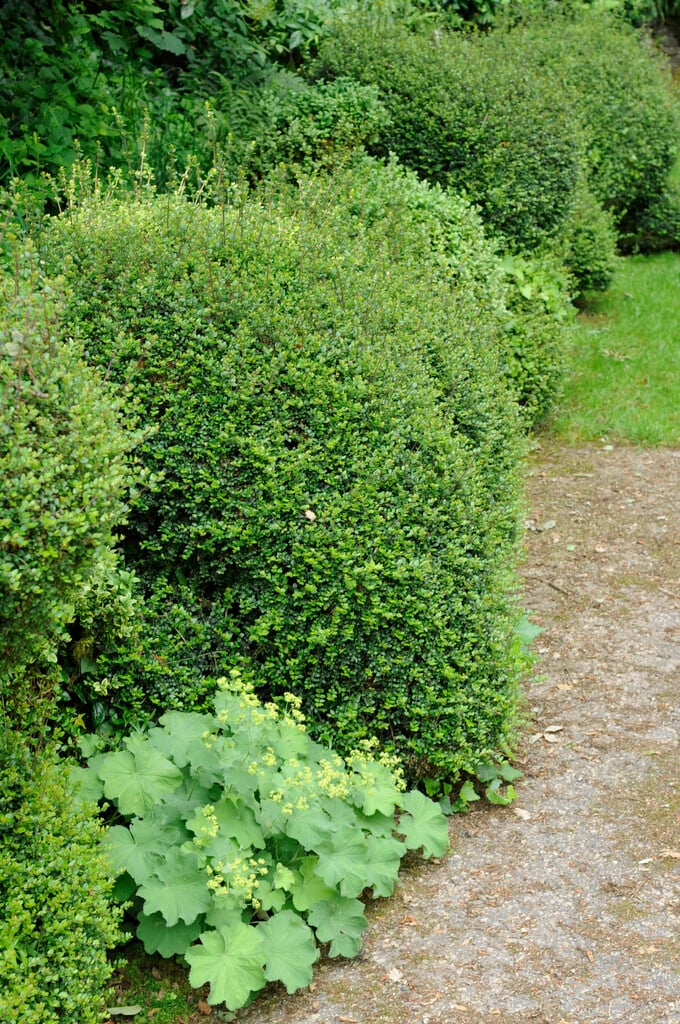Lonicera nitida 'Hohenheimer Findling'
honeysuckle 'Hohenheimer Findling'
A compact evergreen shrub reaching 1m. It has very small, mid-green leaves, emerging pale in spring and flushing red in winter. It is suitable for pruning to shape.

Size
Ultimate height
0.5–1 metresTime to ultimate height
2–5 yearsUltimate spread
0.5–1 metresGrowing conditions
Moisture
Moist but well–drainedpH
Acid, Alkaline, NeutralColour & scent
| Stem | Flower | Foliage | Fruit | |
| Spring | Green | |||
|---|---|---|---|---|
| Summer | Green | |||
| Autumn | Green | |||
| Winter | Green Red |
Position
- Full sun
- Partial shade
Aspect
East–facing or North–facing or South–facing or West–facing
Exposure
Exposed or Sheltered Hardiness
H6Botanical details
- Family
- Caprifoliaceae
- Native to GB / Ireland
- No
- Foliage
- Evergreen or Semi evergreen
- Habit
- Bushy, Spreading branched
- Potentially harmful
- Fruit are ornamental - not to be eaten. Wear gloves and other protective equipment when handling. Pets: Fruit are ornamental - not to be eaten - see the HTA guide to potentially harmful plants for further information and useful contact numbers
- Genus
Lonicera can be deciduous and evergreen shrubs, or climbers with twining stems. The tubular or two-lipped flowers, often very fragrant, are followed by red or black berries
- Name status
Accepted
How to grow
Cultivation
Grow in any well-drained soil in full or partial sun. See honeysuckle (shrubby) cultivation for further advice
Propagation
Propagate from hardwood cuttings, softwood cutttings or semi-ripe cutting at each time of year
Suggested planting locations and garden types
- Cottage and informal garden
- Banks and slopes
- Hedging and screens
Pruning
Pests
May be susceptible to aphids, thrips and glasshouse whitefly
Diseases
May be susceptible to powdery mildews
Love gardening
Sign up to receive regular gardening tips, inspiration, offers and more
View our Privacy Policy
Get involved
The Royal Horticultural Society is the UK’s leading gardening charity. We aim to enrich everyone’s life through plants, and make the UK a greener and more beautiful place.